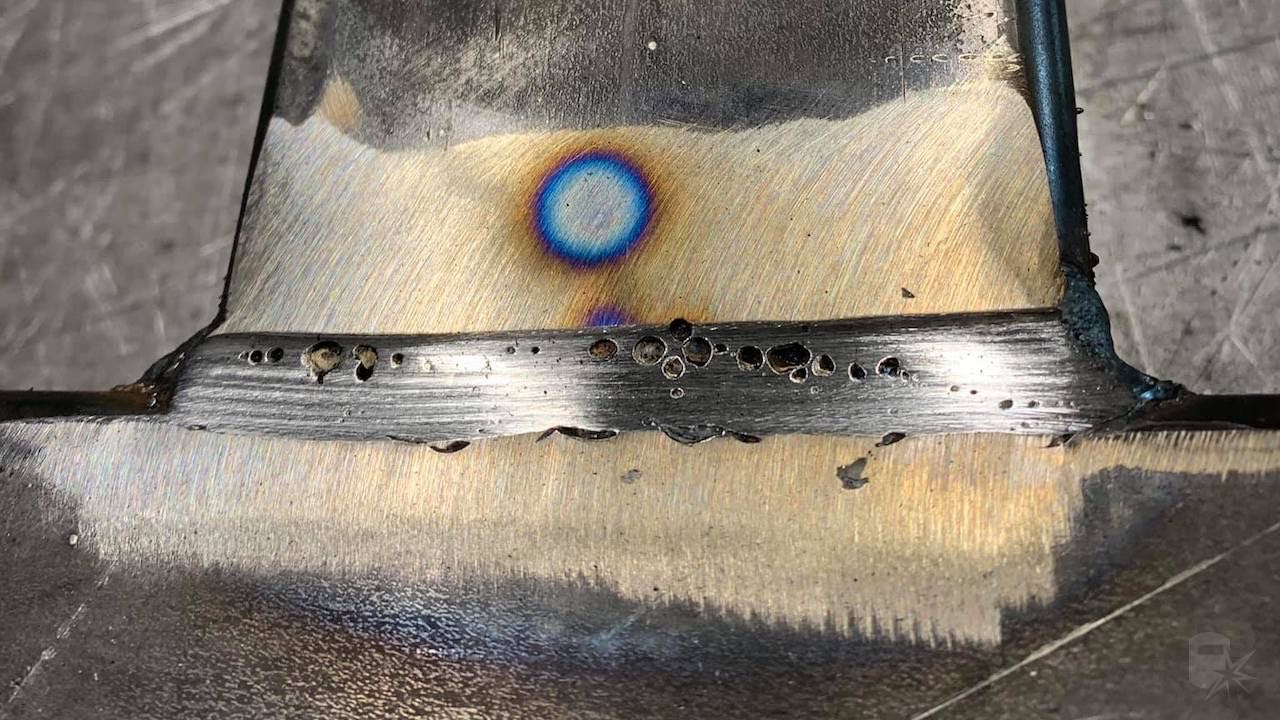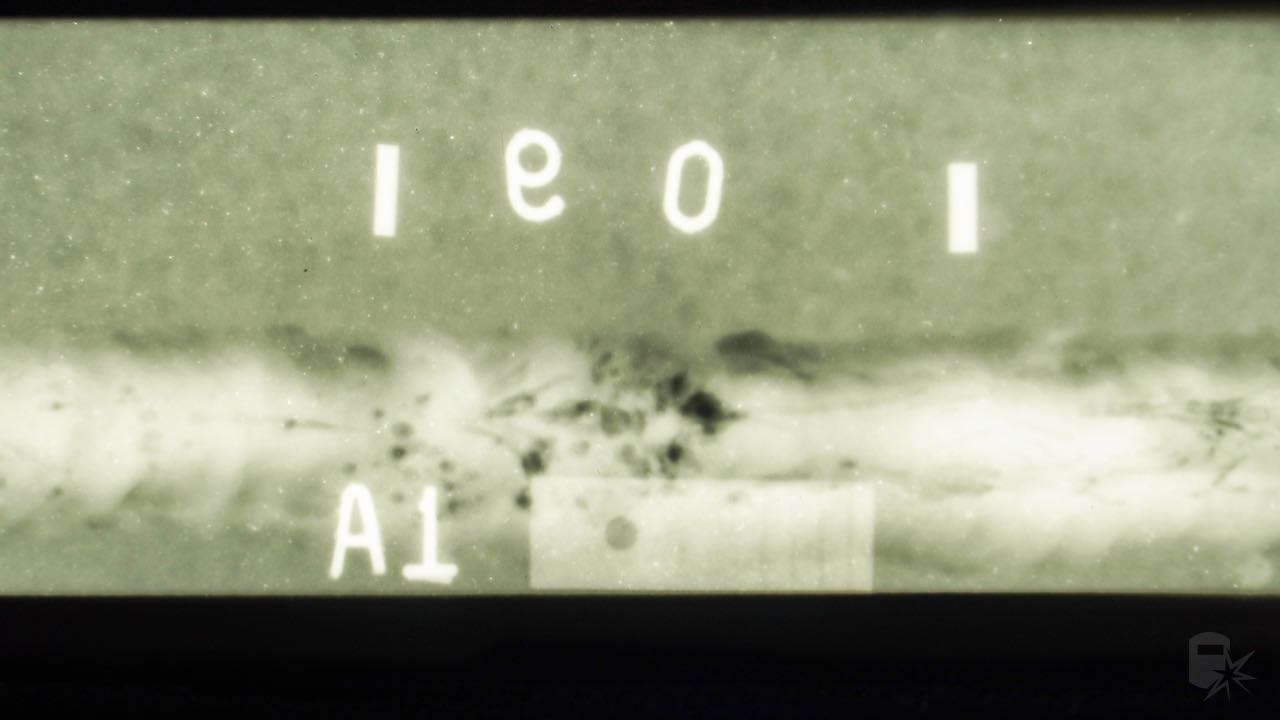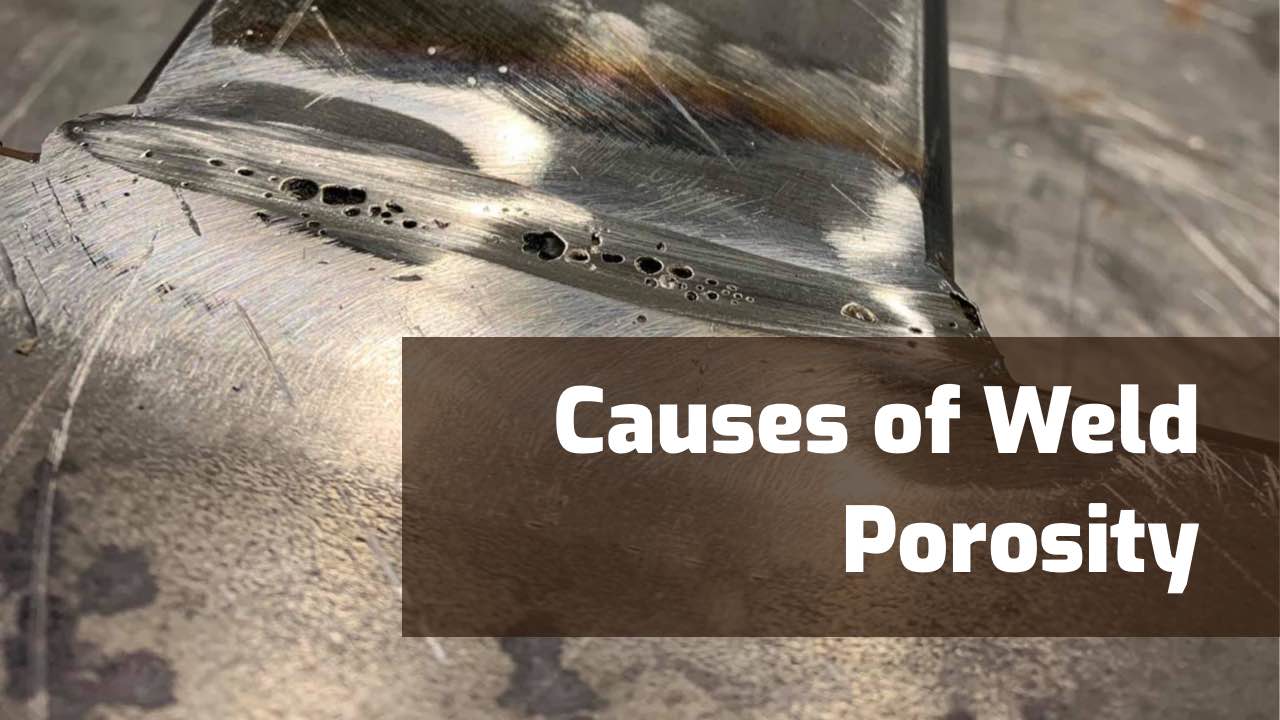Nothing annoys a welder more than seeing those sparks and small explosions mid-bead, knowing when the hood is lifted, it’s not going to be pretty.
Every welder has experienced weld porosity.
In this article, we will discuss what it is, what causes it, and what we can do about it.
What is Welding Porosity?

© weldguru.com – Image usage rights
is a that results from unwanted gasses being trapped within the molten during solidification, which causes pockets or pores on the or within the bead. can occur on the of a or within the .
Different types of porosity
There are four types of weld porosity that can manifest in different forms.
Surface Porosity

© weldguru.com – Image usage rights
One of the most obvious forms is surface porosity, also known as surface breaking pores. This is the porosity that looks like swiss cheese to the naked eye.
The pores are sitting right on top of the bead, spread out evenly or deposited randomly throughout the bead.
Subsurface Porosity

© weldguru.com – Image usage rights
Subsurface or distributed porosity can also be hidden beneath the surface of the bead. This porosity is harder to detect.
X-ray or a grinder are good tools to discover this form of porosity. This type of porosity can also display itself with a small bubble that expands as the bead cools.
Wormholing

Wormhole porosity is only revealed when the slag is removed from a bead done with a process with flux.
Wormholes are elongated pores that look like a worm has burrowed its way along the top of the bead or down into the bead.
Cratering
Cratering is a different form of porosity. Cratering is a small divot usually found at the end of a bead.
Cratering is a phenomenon caused by gravity and shrinkage of the molten metal during solidification.
No matter what type of porosity you have, it can cause a weld not to pass inspection, fail, and in a worst-case scenario, injure someone depending on the integrity of the weldment.
Why does porosity form?
Porosity can form for a variety of reasons. Some of these include:
- Contamination left on the base metal
- Atmosphere sneaking into the weld pool due to improper shielding gas or flux
- Problems with the mechanical working of the machine itself
- Wrong procedure during the welding process
Contamination
Contamination of the material to be welded can include various substances such as paint, oil, moisture, mill scale, even the oil left from your grubby mitts handling the material.
These contaminants will instantly flash into gasses that will become trapped within the weld pool, not allowing for a solid weld structure.
Shielding Gas Problems
Shielding gas or flux is what protects the molten puddle from reacting with the atmosphere. Porosity will occur when this shielding gas is improperly applied, or the flux is contaminated with moisture.
Not enough shielding gas will result in an oxidized weld at best. More often than not, the liquid metal will react with the atmosphere trapping gasses such as oxygen and nitrogen within the weld pool and causing porosity.
Too much pressure can also be a problem. When the rate is too high, it will create turbulence in the shielding envelope. This will suck the atmosphere into the area intended to be shielded, resulting in .
Mechanical Problems
Problems with the welding equipment can also cause issues with the bead. The most common issues are:
- Cracked MIG liners, worn O-rings, or loose fittings will allow outside air to seep into the shielding gas delivery system.
- MIG nozzles filled with splatter can disrupt shielding gas.
- Bottles of shielding gas themselves can come from suppliers contaminated with impurities which can also cause porosity in the weld bead.
Technique
Another way to accomplish porosity in the bead is improper technique. For example:
- An extreme angle of a TIG torch or MIG stinger can result in gas not completely enveloping the puddle in shielding gas.
- Moving too fast for the amount of shielding available can also expose the puddle.
- Ending a TIG bead too quickly and removing the shielding gas suddenly will cause a crater at the end of the bead.
How to Prevent Porosity
Now that we know the causes of porosity, what can we do to prevent it?
By taking some of the following steps, you will reduce the chance of porosity occurring.
Material Preparation
Weld metal preparation is imperative to a quality bead.
Some procedures can weld through mill scale, paint, primers, or other coatings on metal. There are even primers that are designed to be welded through.
But to guarantee a pure bead, clean metal is always better, especially when it comes to TIG welding. To do this, make sure:
- Hot-rolled steels should have the mill scale removed.
- Paint and other coatings should also be ground, sanded, or media blasted off to reveal bare clean base material.
- Aluminum can be wire brushed with a dedicated stainless steel wire brush to remove the oxide layer. Note: The wire brush needs to be dedicated to aluminum to avoid transferring ferrous metal to the aluminum, possibly adding impurities.
Material Cleaning
Once the material has been cleared of all coatings, a cleaning solution should be used.
The most common cleaner used is acetone. Acetone does an excellent job at dissolving oils and other contaminants.
Isopropyl alcohol and lacquer thinner also work very well. There are also chemical solutions that are designed specifically for certain materials, such as Aluma-Clean for aluminum.
Just make sure not to use chlorinated brake cleaners. The brake clean can leave a film that will create toxic fumes upon being burned.
You should use a non-linting cloth to apply the cleaning solution. Another helpful trick when cleaning metal is to only wipe in one direction – this prevents contaminants from being smeared around the joint.
Machine Maintenance
Machine maintenance is also essential, not only for a non-porous weld but for the overall quality of the bead.
The following list is some simple maintenance you should be doing:
- Regularly cleaning and replacing MIG liners.
- Cleaning excessive spatter from contact tips and nozzles.
- Check the fittings on welders and regulators for tightness and cleanliness of mating surfaces.
- TIG gas lenses, diffusers, collet bodies, and O-rings must be kept clean and clear of debris.
- Your welding rod and wire also need to be cleaned.
Tip: Take a rod from a new tube and wipe an acetone-soaked cloth across it, and you’ll be surprised by what comes from the factory!
Properly Storing Stick Electrodes
Stick rods themselves can become contaminated with moisture.
Rods should be kept in sealed dry storage. If rods do soak up moisture from the atmosphere, they can be dried. Rod ovens are specialized ovens for drying out rods to remove moisture.
Environmental Problems
The environment can also contribute to porosity.
It only takes a slight amount of air movement to disrupt the shielding gas. Open doors, fans, and even cooling fans from welding machines themselves can create enough of a disturbance to induce pores in the bead.
So to help reduce porosity, consider your environment and minimize surrounding air movement where possible.
How do you fix porosity?
After taking all the precautions, there is still the chance that porosity can show up. When this happens, it will need to be repaired.
The only way to properly repair a weld porosity is to remove the porous section of the weld down to the base material. Attempting to weld over the affected bead will only end in the same result.
A thin grinding wheel is often the best tool to accomplish this task. The entirety of the porosity must be removed with as little base metal reduction as possible.
After removing the damaged section, it must be cleaned again to ensure no contaminants have been reintroduced into the joint.
Start the bead slightly ahead of the remaining bead and then back up to that existing weld.
Watch the toes of the weld to match the width of the original bead and finish it off.
Quick FAQs
What are the main causes of porosity?
Typical causes of porosity is contamination on the base metal, atmosphere sneaking into the weld pool due to improper shielding gas or flux, mechanical issues like cracked MIG liners, worn O-rings, or loose fittings, or poor welding technique.
Can you weld over porosity?
No, because the defect will still remain. You must first remove the defect entirely by removing the porous section of the weld down to the base material and then cleaning it again before you weld that section again.
How do you repair porosity?
The only way to properly repair a weld porosity is to remove the porous section of the weld down to the base material. Attempting to weld over the affected bead will only end in the same result.
Wrapping it Up
Porosity can create headaches for the greenest welder and veteran alike.
It is a problem that we will all experience in our metal melting journey. However, it can also be fixed, and in many cases, completely avoided.
Preparation and maintenance are vital in preventing welding porosity.

Hi, I have a problem with E6013 electrode welding. Spattering, porosity, and slag removal are all good, however, re-striking is an issue. During welding, a cup of flux makes due to which core wire goes back and I need to remove the boundaries of flux to make contact of the core with my workpiece. Is there any solution for this? I am a formulation engineer of E6013 electrode flux.